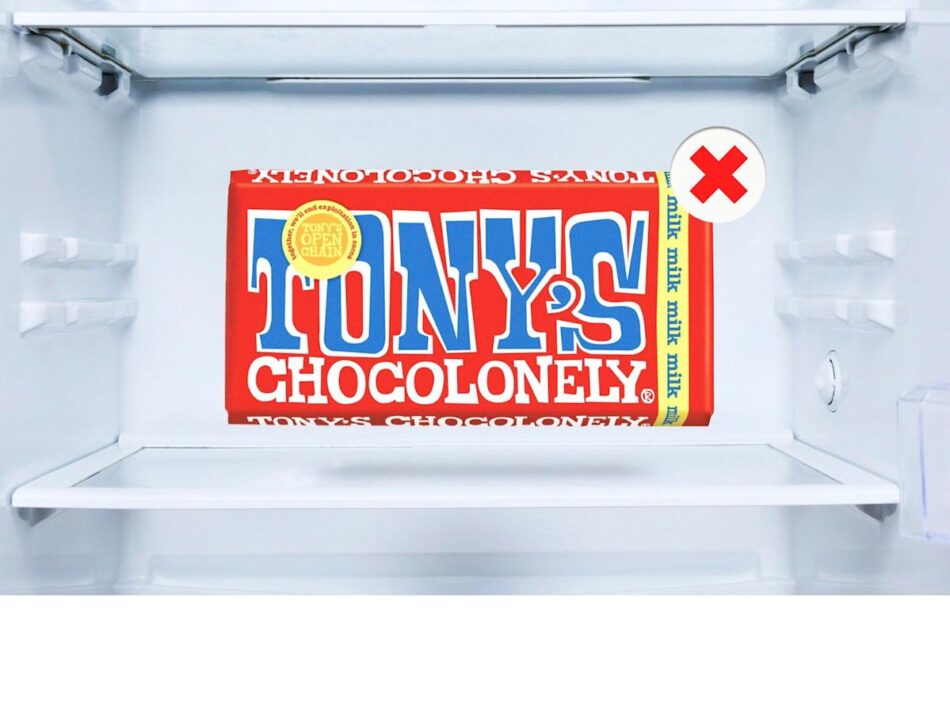Chocolate is always cool, obviously. If you don’t agree, stop reading now. But – more controversially – should it actually be cold?
According to recent research, 53 per cent of Brits regularly stick their chocolate in the fridge, insisting it makes for a more refreshing way to get their fix in the summer – plus one that’s less likely to end in a sticky mess on a hot day (with a heatwave predicted this weekend the average room temperature may veer into danger territory for chocolate, above 22-25C). But traditionalists are appalled, pointing out that cold dulls the flavours of the chocolate and, anyway, in a British climate normally there’s little risk of unintended melt.
The chocolate manufacturers are paying close attention. Hotel Chocolat already sells chillable, summer cocktail-flavoured chocolates, and Cadbury has entered the fray with “thermochromic” temperature-sensitive wrappers for its Dairy Milk bars. When cooled, vibrant summer-themed designs such as umbrellas, kites and deckchairs are revealed. It’s hardly earth-shaking, but a smart innovation nonetheless, says Natalie Alibrandi, chief executive of Nali Consulting, which supports new food product innovations, to boost “chocolate sales [which] tend to decline in the summer months”.
So, gimmicks aside, is it really cool to ice your chocolate? Here’s the expert take.
Skip to:
Eight iconic chocolate bars – to chill or not to chill?
Most experts agree that the best temperature at which to enjoy high-quality chocolate is room temperature, or around 20C. But as the all-important melting temperature of dark chocolate is up to 5C higher than white chocolate (with milk somewhere in between), giving white bars half an hour in the fridge on a hot day can’t be bad. I put these iconic bars to the taste test to find out.
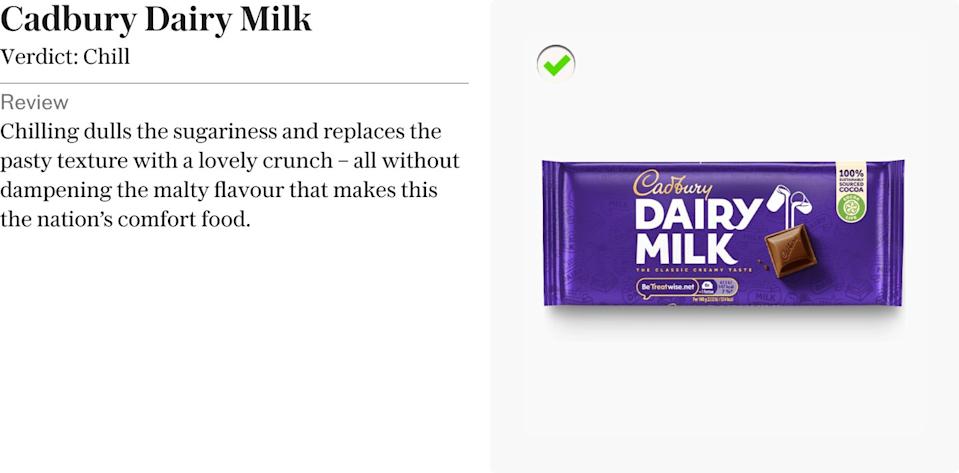
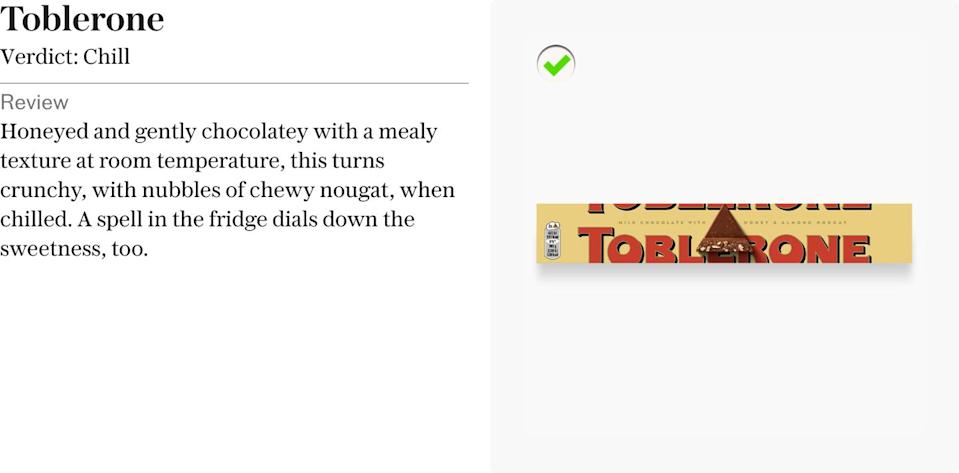
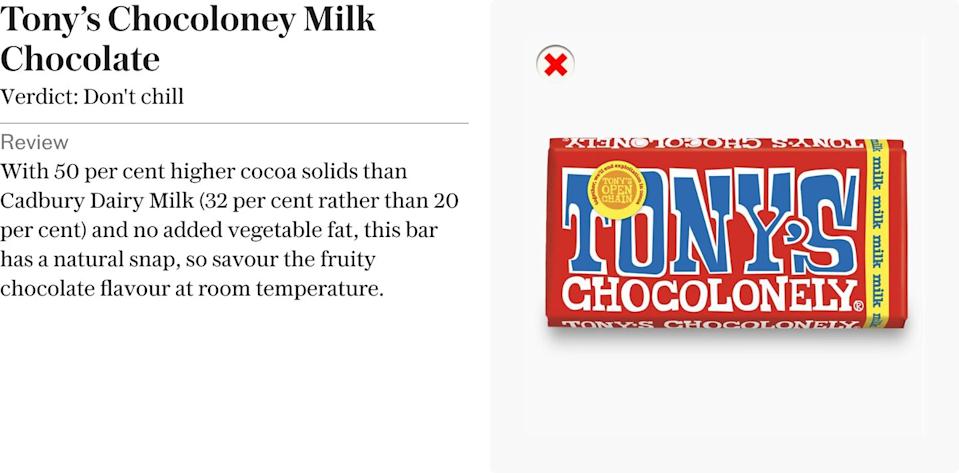
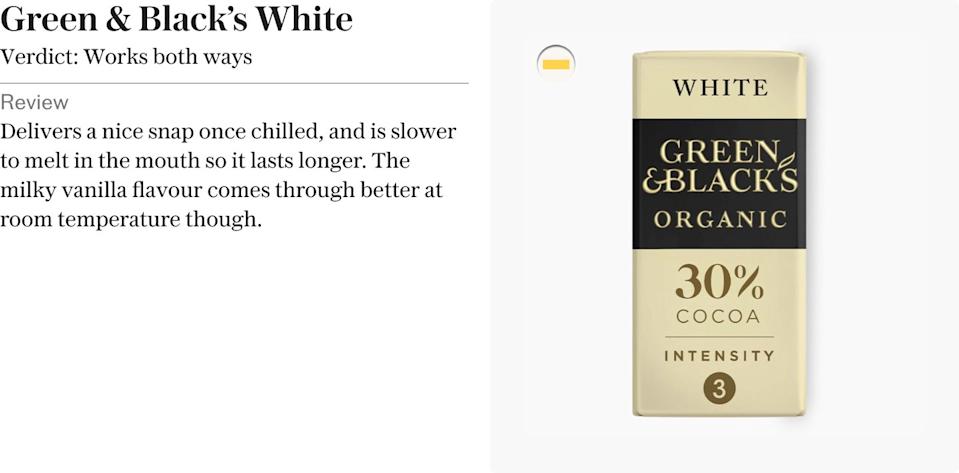
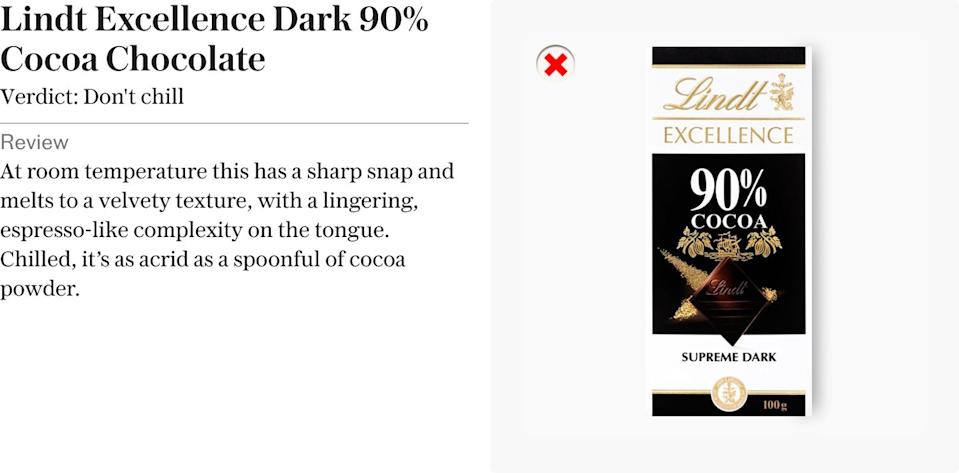
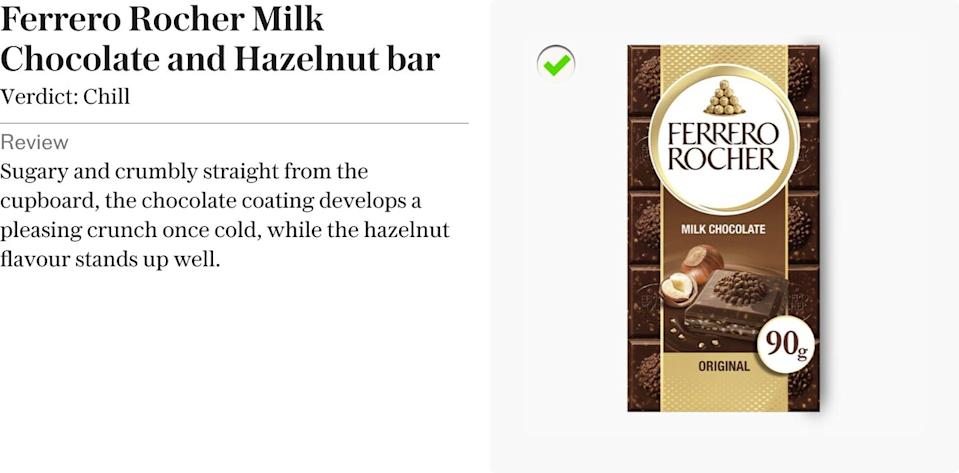
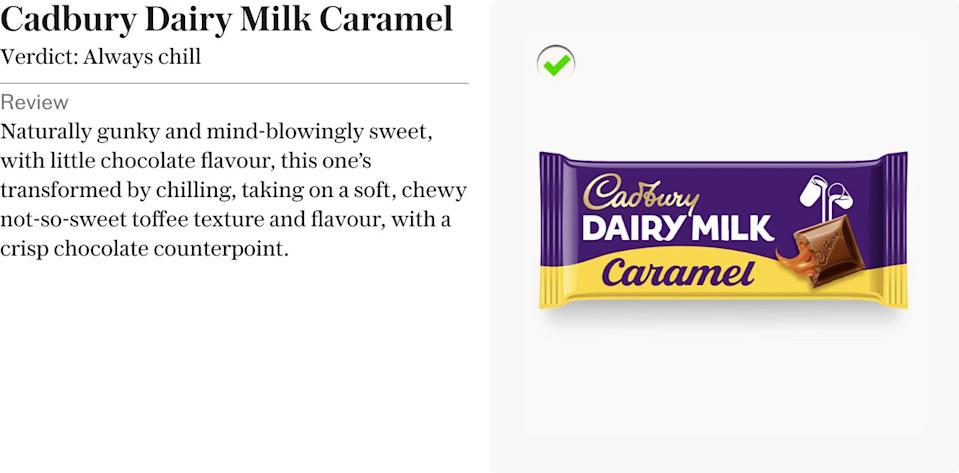

The argument for room temperature
Chantal Coady OBE, a chocolate maker, retailer and champion of sustainably-made products, who is also known as The Chocolate Detective, believes chocolate is best enjoyed at room temperature, “where the flavours can come through. Chilled chocolate is going to take longer to melt in your mouth, and you may not experience all of the subtlety when it’s colder,” she argues.
Also in this camp is The Telegraph’s Andrew Baker, author of From Bean to Bar: A Chocolate Lover’s Guide to Britain. “Temperature is absolutely fundamental to the flavour of chocolate,” he stresses, “because the things that make it taste of something are released when chocolate melts. The more chilled it is, the less flavoursome it is as a rule of thumb.”
Coady agrees, pointing out that chilling can even damage chocolate. “Imagine a bottle of cold water,” she says. “You bring it out of the fridge and it starts getting condensation all over it. The same happens to chocolate.” This layer of water causes the sugar to seep out of the chocolate, forming a white layer, “and then you get this crunchy, grainy texture, which is not nice”. (This is different from the smooth, white fat bloom which forms when chocolate gets too hot, and which can be corrected by retempering, i.e. reheating to a specific temperature).
Another issue with chilling involves one of chocolate’s major ingredients, cocoa butter. This prized fat, extracted from cocoa beans and with the ability to melt at our body temperature (one of the factors that makes chocolate so seductive) is also an aroma sponge. If you do keep your chocolate in the fridge, wrap it meticulously, “or it will end up tasting like last night’s curry”, warns Baker.
The argument for chilling
Cold chocolate does have a place: it just depends what the chocolate is.
Texture can be improved in poorer quality chocolate which tends to break with a dull thud rather than the crisp snap of better quality bars. Chilling hardens the chocolate so it’s more “snappy” – music to the ears of cocoa connoisseurs, and making it crisper to nibble on.
As for taste, whereas dark chocolate is unlikely to be improved by time in the fridge (it “loses more of its flavour proportionally when chilled because it has more flavour to start with”, argues Baker), white chocolate, which is less complex and blander, with less to lose flavour-wise, “lends itself quite well to chilling. It has a higher cocoa butter content, so when it comes out of the fridge it melts more easily in your mouth.”
Ice cream chefs know they need to add extra sugar and acid to the mix as the cold will mute the flavours. By the same principle, tooth-splittingly sweet, gooey chocolate can seem well balanced when chilled.
Baker points out that Hotel Chocolat’s box of Cocktails-to-Chill (£11.95 for 16) work well because “they have a sharp fruity flavour”, and that “a Mars or a Snickers is really quite satisfactory from the fridge, a sort of halfway house between a chocolate bar and an ice cream”.
The final verdict
I love an indulgent, nostalgic treat straight from the fridge – but if it’s flavour, not just texture I’m after, then I try to remember to let each bite linger in my mouth rather than just chomping down. And who knows, if you, too, prefer chilled chocolate – which is harder, and less sweet – perhaps you’d like higher quality chocolate that is lower in sugar and crisper at room temperature. Or not.
Your chocolate, your rules – and you can share yours with me in the comments section.

